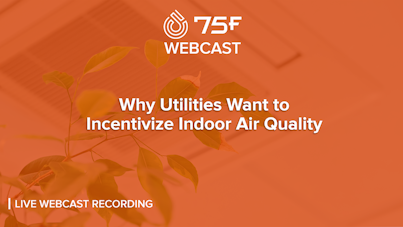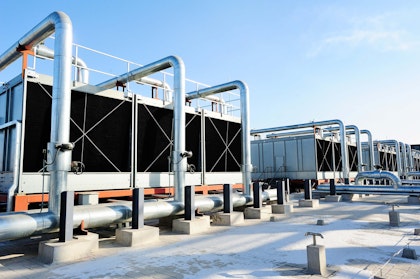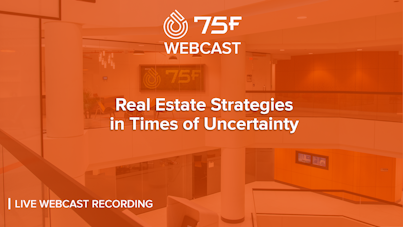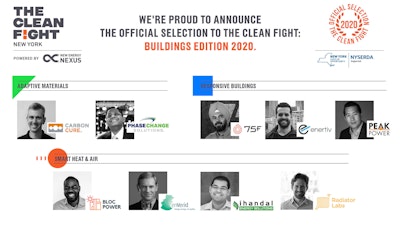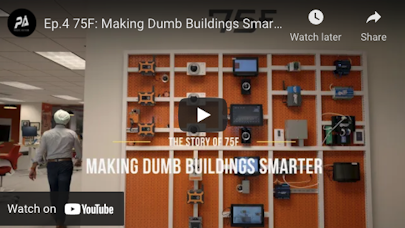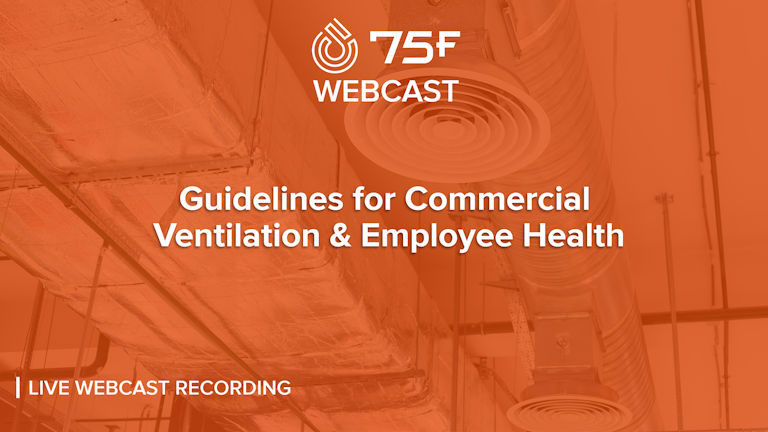
Healthier Buildings Series: Guidelines for Commercial Ventilation
75F’s Healthier Buildings webcast series exists to help the proactive building owner, facility manager, and installer understand how to make their indoor environment safer for occupancy during an ongoing pandemic.
Ample research demonstrates that indoor environments are hazardous for the spread of COVID-19, and viruses in general. While the coronavirus has far from disappeared, strict stay-at-home orders are lifting across the country and businesses are opening their doors following months of closure.
To reduce the risk of transmission in indoor spaces, both the Centers for Disease Control and Prevention (CDC) and the American Society of Heating, Refrigerating, and Air-conditioning Engineers (ASHRAE) are recommending building owners alter their HVAC control sequences to increase ventilation rates and outdoor air (OA) ratios.
These recommendations from science and industry experts provide the foundation for our Healthier Buildings series. Each bi-weekly session focuses on specific topics – such as energy efficiency or partial occupancy – and how they interact with CDC & ASHRAE guidelines and COVID-19.
Our first webcast in the series helped viewers understand the science behind ASHRAE & CDC guidelines, and learn how to implement them in their own buildings. Real Estate Manager at HOM Furniture, John Pierce, joined the discussion to provide real-time information about how HOM Furniture has been handling the ongoing pandemic.
CDC & ASHRAE Recommendations
Current recommendations from the CDC suggest that building owners and facility managers reduce disease transmission from airborne particles by improving the engineering controls for ventilation systems to:
Increase the percentage of OA inside their buildings.
Increase ventilation rates.
Some strategies the CDC outline include keeping systems running longer hours, 24/7 if possible, and to disable demand-controlled ventilation (DCV). It also recommends opening OA dampers as high as 100 percent to reduce or eliminate recirculation.
ASHRAE further recommends:
Flushing the air in a building for two full hours prior to first expected occupancy.
Flushing the air in a building again for two full hours post occupancy, or after closing.
It’s important to note that practicing social distancing, wearing masks, washing hands often, and disinfecting surfaces is still essential to maintaining a safer environment.
Ventilation and COVID-19
Researchers know that COVID-19 spreads primarily via virus-containing droplets and aerosols that are expelled when an infected person breathes, coughs, speaks, or sneezes. An infected person need not show any symptoms in order to spread these droplets, meaning seemingly healthy people can cause outbreaks in their workplace or public indoor spaces without realizing.
A CDC case study on an outbreak in a South Korean call center illustrates this point and indicates the duration of exposure to viral particles may be a key factor in contracting the virus.
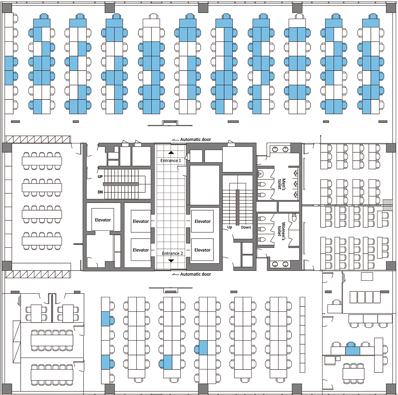
In this example, one sick employee managed to infect 94 other people on a single floor of the call center. The study notes that workers on this floor did have considerable interaction with employees on different floors, yet the outbreak was almost exclusively contained to the floor on which the infected person worked. This indicates, the study states, that duration of contact to viral particles was likely the main facilitator for the viral spread.
To mitigate prolonged exposure to high concentrations of the virus, research from the American Society for Microbiology recommends increasing OA indoors to dilute the viral load.
Implementing Suggested Sequences of Operation
Rooftop units (RTUs) and air handling units (AHUs) are not designed for 100 percent OA loads, so proper execution is important. Extreme weather conditions can cause uncomfortable conditions indoors and may even worsen the risk of infectious aerosols.
Those who do not currently use a building automation system (BAS) will need to get on the roof and manually open OA dampers to the extent possible. If there’s an economizer, call an HVAC technician to set the minimum position to 100 percent if possible.
With help from a typical BAS, facility managers can simply edit settings for the OA damper minimum position, as well as turn off DCV.
To execute a purge pre- and post-occupancy, those with a programmable thermostat will need to change the program to begin two hours before occupancy, and end two hours after occupancy. With a BAS, edit the fan setting to cover two hours before and after occupancy. If this is not possible with your BAS, adjust the occupied schedule.
75F customers can follow both recommendations – increased OA ratios and twice daily purges – by activating Epidemic Mode, a new sequence of operations 75F created to follow ASHRAE and CDC guidelines as they evolve over time while also saving as much energy as possible under the conditions, without any programming required on the user’s end.
Field Example: HOM Furniture
HOM Furniture’s John Pierce enabled Epidemic Mode for the company’s two million square-foot suite of buildings just one day prior to the webcast date as the business prepared to reopen doors to the public.
However, their efforts to utilize OA for healthier indoor conditions began before Minnesota’s stay-at-home order went into effect. Pierce called 75F’s support team to introduce 100 percent OA, and successfully implemented this until Minnesota Governor Tim Walz ordered businesses shut down just a few days later.
HOM Furniture was able place their buildings into setback conditioning in minutes, a task that would have been laborious for two million square feet without help from a BAS.
“Because of having 75F in all my locations, I’m able to just click a button, and that is performed,��” Pierce said of setback conditioning. “In our previous energy management software, what we would have had to do is go around and touch every one of our thermostats individually to set those back."
Though energy efficiency is a topic we discuss in more detail on our second webcast, presenters did touch on this point – enhanced ventilation will mean higher utility costs.
“It’s a tough line to toe,” Pierce said. “Obviously as a responsible retailer, we want to do all that we can to keep our customers and employees as safe as possible.”
For further information on this webcast, please reference the recording or the PDF of presentation slides, which you can find here.


